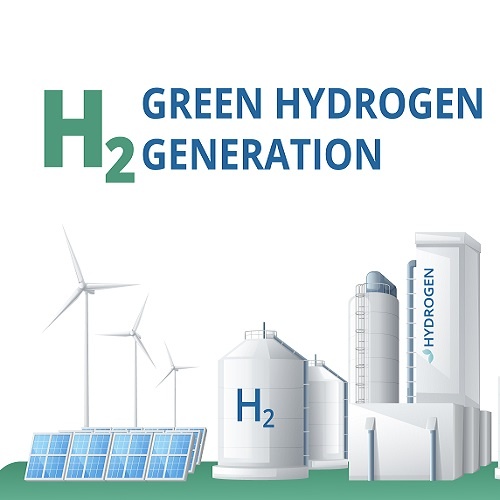New Delhi: The Government of India has come out with guidelines for undertaking pilot projects for using green hydrogen in the shipping sector.
The guidelines, named “Scheme Guidelines for Implementation of Pilot Projects for the Use of Green Hydrogen in the Shipping Sector,” were issued by the Ministry of New and Renewable Energy (MNRE) on February 1 under the National Green Hydrogen Mission.
Under the mission, along with other initiatives, the Ministry of New and Renewable Energy will implement pilot projects in the shipping sector to replace fossil fuels and fossil fuel-based feedstock with green hydrogen and its derivatives. These pilot projects will be implemented through the Ministry of Ports, Shipping, and Waterways (MoPSW) and the implementing agencies nominated under this scheme.
As per the Ministry, “Two areas have been identified as thrust areas under the pilot projects. These are the retrofitting of existing ships so as to enable them to run on green hydrogen or its derivatives, and the development of bunkering and refuelling facilities in ports on international shipping lanes for fuels based on green hydrogen.”
“The Scheme will be implemented with a total budgetary outlay of Rs. 115 crores till the financial year 2025-26,” Ministry added
The salient features of the scheme are that projects with the intention of developing pilot-scale demonstration plants for the replication of technology will be supported by the Shipping Corporation of India (SCI) or its successor, and in the event of disinvestment, the Scheme Implementing Agency (SIA) will be responsible for retrofitting the existing ships under Component A. MoPSW shall finalise the SIA for Component B of the Scheme.
The SIAs shall award the projects under the scheme through a transparent process. Provisions of the General Financial Rules (GFRs) shall be followed in all selections and procurements.
MNRE will issue administrative sanctions for the projects under the scheme based on the recommendations of the Project Appraisal Committee (PAC).
The executing agencies (EAs) selected for the projects will share knowledge and the outcome of the pilot projects through project completion reports, monitoring reports, workshops, and publications to disseminate findings, best practices, and lessons learned from the pilot.
The scheme aims to leverage existing resources and infrastructure available with MoPSW and its agencies for the transport, storage, and use of green hydrogen and its derivatives in the shipping sector.
The scheme would fund capital expenditure on retrofitting existing ships with Green Hydrogen and its derivatives-based propulsion system and creating bunkering and refuelling facilities on port(s). Expenses on account of the production of green hydrogen or its derivatives, land, etc. will not be funded.
Financial support for projects will be evaluated and granted, taking into consideration the specific needs, merits, and feasibility of each project.
The use of green hydrogen and its derivatives in the shipping sector, through the proposed pilot projects, will lead to the development of necessary infrastructure, including refuelling stations, storage, and distribution networks, resulting in the establishment of a green hydrogen ecosystem in the shipping sector.
The utilisation of green hydrogen in the shipping industry is expected to increase over the years, with an expected reduction in its production costs.
The National Green Hydrogen Mission was launched on January 4, with an outlay of Rs 19,744 crores up to FY 2029-30. It will contribute to India’s goal to become Aatma Nirbhar (self-reliant) through clean energy and serve as an inspiration for the global Clean Energy Transition.
The mission will lead to significant decarbonisation of the economy, reduce dependence on fossil fuel imports, and enable India to assume technology and market leadership in green hydrogen.
(With inputs from ANI)












